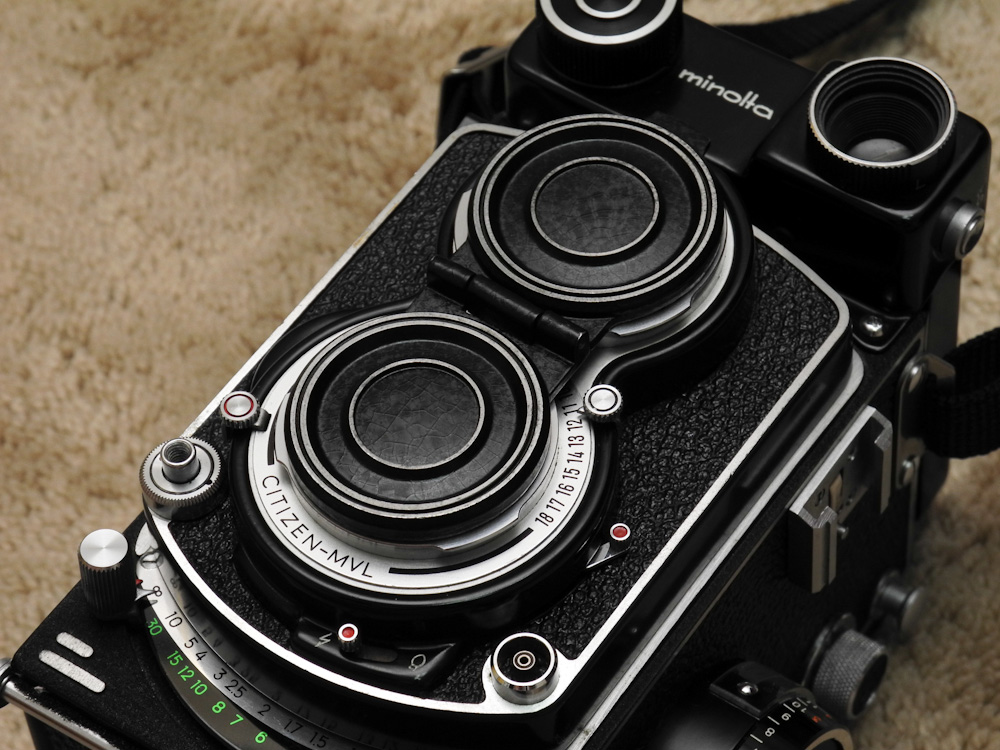

They are also sought-after collectibles!Īdd an external link (Only for members of Forum). 5My Experience Kazuo Tashima founded Minolta in Osaka, Japan, in 1928 as Nichi-Doku Shashinki Shten, which means Japanese-German Camera Shop. To sum up, Autocords are excellent TLRs that give outstanding results for a very fair price. The Minolta Autocord produces twelve 6×6 photos on a roll of 120 film, which I feel is a nice, manageable number for a full-roll post. The Autocord feature on this page is a RG 2nd version, from 1962 (no light meter, no 220 film). There has been many variations of the Minolta Autocord, the latest versions have a built-in CdS meter and can accept 220 rollfilm. 1 filters and hoods, Minolta Autopole (dedicated polarizing filter), Minolta Paradjuster (for correcting parallax). The Autocord can receive many accessories, including Bay.

The earliest Optipers have a maximum speed of 1/ 400th, all the other shutters fire up to 1/ 500th. The Autocord has features-a-plenty: accessory shoe, flash sync, tripod socket, shutter release lock, self-timer, sport-finder, double exposure capability… The shutter can be an Optiper, a Seiko or a Citizen. The truth is that the difference is hard to tell, especially on small prints, but it’s definitely good value for money! The quality of this lens is astonishing, some say it matches Xenar, Planar and even Xenotar lenses. The taking lens is a Minolta Rokkor ( Chiyoko Rokkor on the earlier versions) 75mm 1:3.5, and the viewing lens is a slightly brighter 75mm 1:3.2. As a consequence, the film is bent after being exposed, and not before! The film flatness is therefore excellent, better than in any other TLR. Unlike all the other TLRs, the film is placed in the upper part of the camera and the empty spool in the lower part. The other very interesting feature of the Autocord is the film transportation. However, this is the only weak point of the Autocord: the overall quality of construction can compete with pretty much any TLR, including Rolleiflex!

Focusing is very smooth and easy… that is, if the tip of the focusing knob doesn’t break! It is made of cheap Zamak, and it is definitely a weak point of this camera – always check it before buying an Autocord! Just another TLR? No! this one is different from Rolleiflex, Rolleicord, Yashica Mat…įirst of all, the focusing system consists of a bronze helicoid: this system is better than the other TLR’s since it is impossible to misadjust! The focusing is therefore made using a focusing knob located below the lenses (not on one side of the camera, unlike most of the TLRs). Minolta engineers not only recognized it, but also addressed the problem by completely redesigning the hot shoe.The Minolta Autocord is a Twin-Lens Reflex ( TLR). This has happened to more than one wedding photographer that I know of back in the days of film, when you didn’t become aware of this kind of failure until after the pictures were developed.įew recognize this as being a problem. The second problem is that if you did not secure it properly (and sometimes even if you do), as you run around the flash might slip a little in the shoe mount, resulting in either no flash or horribly overexposed flash pictures. The first problem with this design is it takes between 5 to 10 seconds to mount or remove the flash and then secure it by screwing down a retaining nut. It has become problematic because as time went on, more and more electrical contacts have been added to the standard shoe mount to allow flash automation. The traditional flash mount on every other camera is based on a design that dates back to at least 1940. You don’t appreciate this unless you shoot under pressure. Brilliantly useful.Ī much-improved “hot shoe”. Pushing another button on the light meter would then tell the camera to take the picture by remote control. If this had been an ordinary camera, after taking the reading you would have to walk all the way back to the camera and manually dial in the f/stop and shutter speed that your handheld meter recommended, and then you’d press the shutter release to take the picture.īut wait! What if you could do all that without having to walk all the way back to your camera? Using Minolta’s Flashmeter IV and the rare DR-1000 data receiver, you could push a button and the exposure settings would be electronically transmitted to the camera by an Infrared data link. You take your Minolta-brand handheld light meter (hey, I told you that you were a professional!) to measure the light hitting the subject (a more accurate way to meter when everyone’s wearing black suits). Your camera is mounted on a tripod with a long telephoto lens.
#PHOTOS FROM MY MINOLTA AUTOCORD PROFESSIONAL#
Let’s say you’re a professional photographer about to take a group picture. 1985 – DR-1000 Remote Light Meter Release – Here’s a very useful idea that was way ahead of its time.


 0 kommentar(er)
0 kommentar(er)
